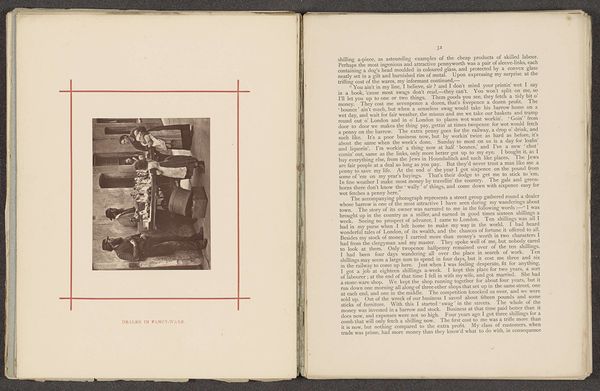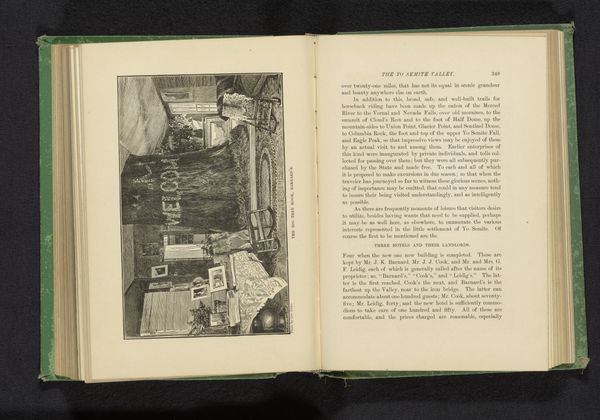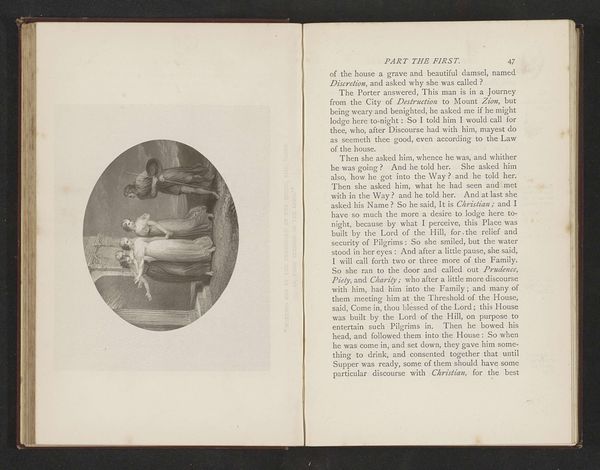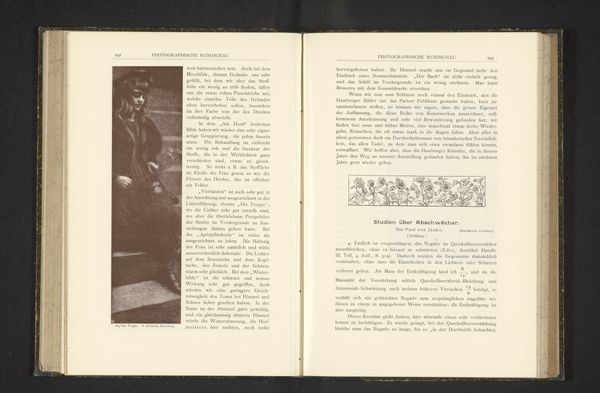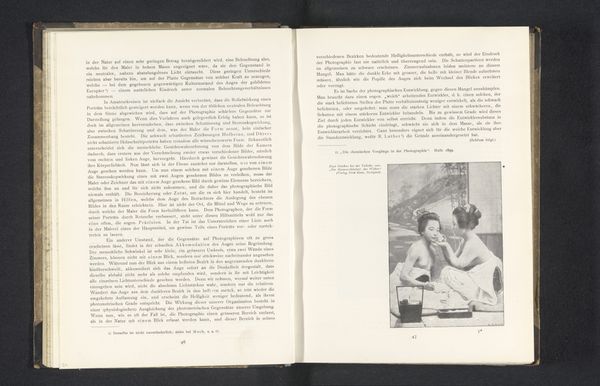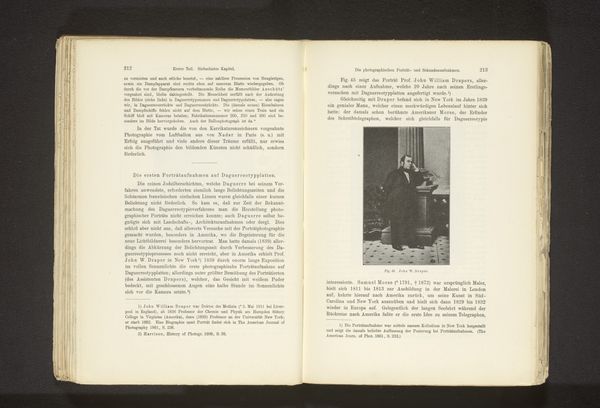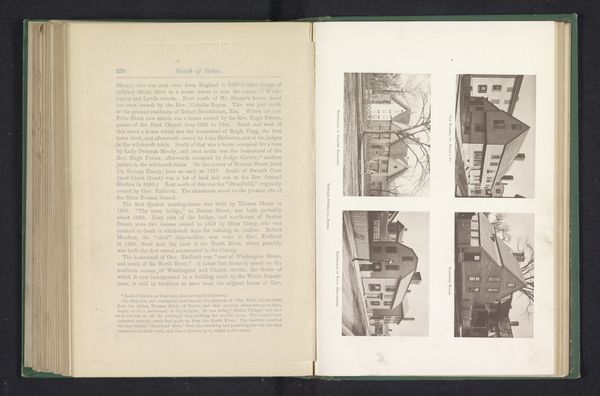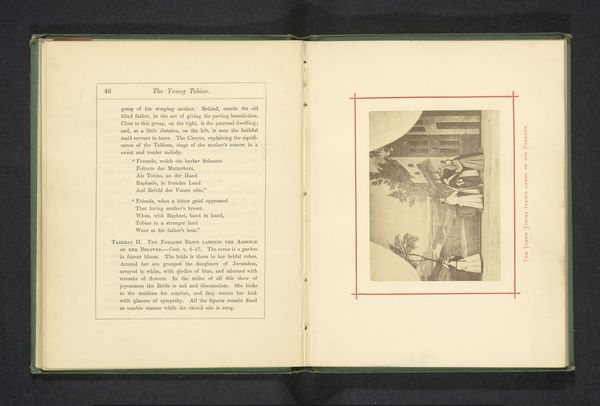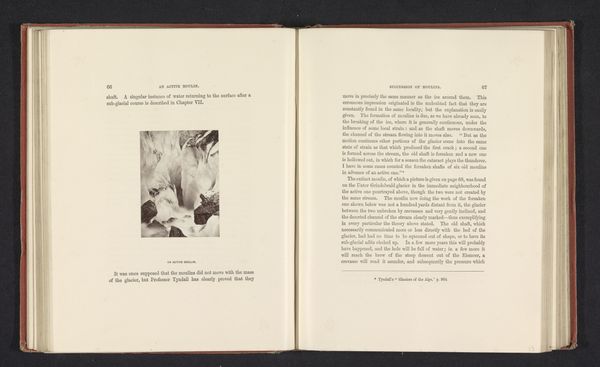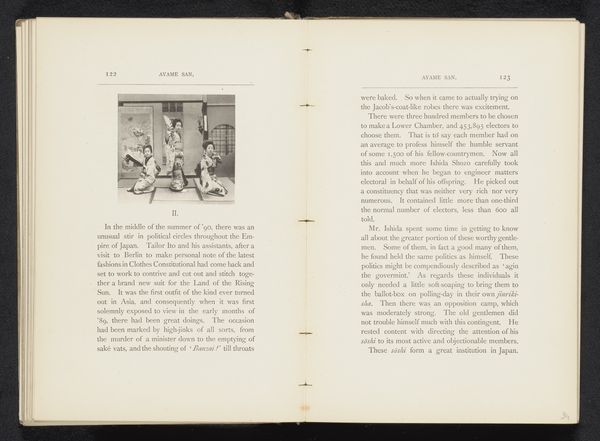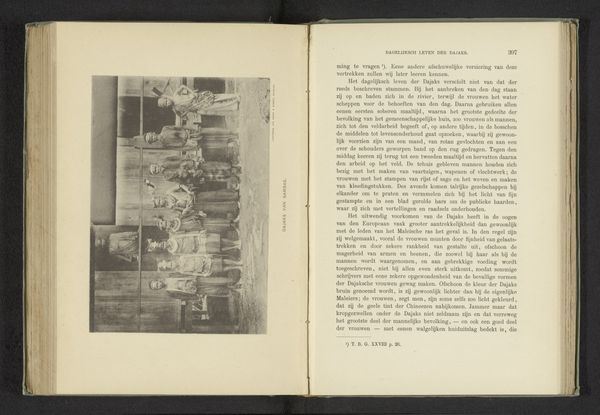
print, textile, photography
#
portrait
# print
#
textile
#
photography
#
genre-painting
#
academic-art
#
modernism
Dimensions: height 107 mm, width 78 mm
Copyright: Rijks Museum: Open Domain
Curator: Here we see an interesting work attributed to Emil Rau, titled "Man en vrouw rollen samen een bol wol"—that is, "Man and woman rolling a ball of wool together," dated before 1900. It seems to be reproduced in a publication, perhaps as a print from a photograph or textile. What's your take? Editor: Initially, I'm struck by its rather muted tonality—almost monochromatic—yet the composition holds a strong diagonal line created by the couple's posture as they engage in what seems a quotidian task. The visual weight appears subtly distributed, creating an equilibrium between the subjects and the implied space around them. Curator: Precisely. Genre paintings often captured such moments to symbolize domestic virtue and simple living. Notice how the yarn acts as a thread linking the two figures—literally connecting them in a shared endeavor and figuratively embodying their intertwined lives. One may note the symbolism of weaving and yarn found throughout mythology and folklore which traditionally associate wool with providence, labor, female virtues and generational legacy. Editor: I agree, and this subtle dynamic is emphasized by the chiaroscuro treatment where the light seems to fall primarily on the female figure—enhancing her gentle involvement in this work. While not necessarily radical in form, one might look to it as an early exploration of semiotic language in photography which foregrounded narratives that captured mundane activity to construct a broader set of cultural meanings. Curator: And isn't it intriguing to consider this ordinary domestic moment in the context of turn-of-the-century social shifts? While gender roles were firmly entrenched in the culture and tradition of the era, it also represents a transition to modernity. These genre photographs served to perpetuate nostalgic fantasies. Editor: Absolutely. Looking at this image allows us not only to dissect formal choices within the image itself but to investigate the complex socio-cultural codes that shape meaning within its historical period. Curator: Thank you. It certainly grants us a glimpse into values projected on middle-class life in pre-modern society and is as resonant today as it ever was. Editor: A rewarding example that yields many possible viewpoints through even such apparent simplicity, indeed.
Comments
No comments
Be the first to comment and join the conversation on the ultimate creative platform.
